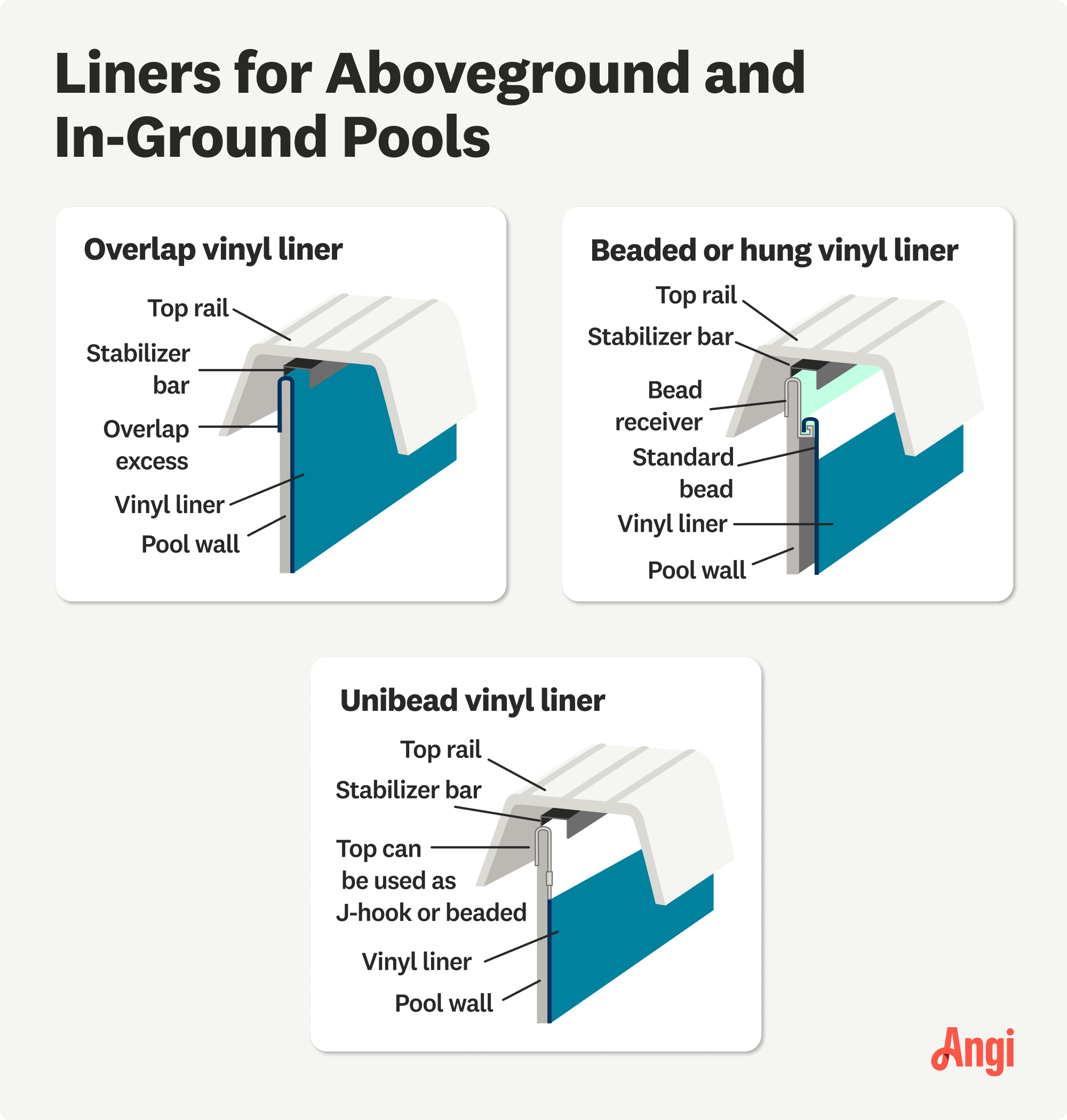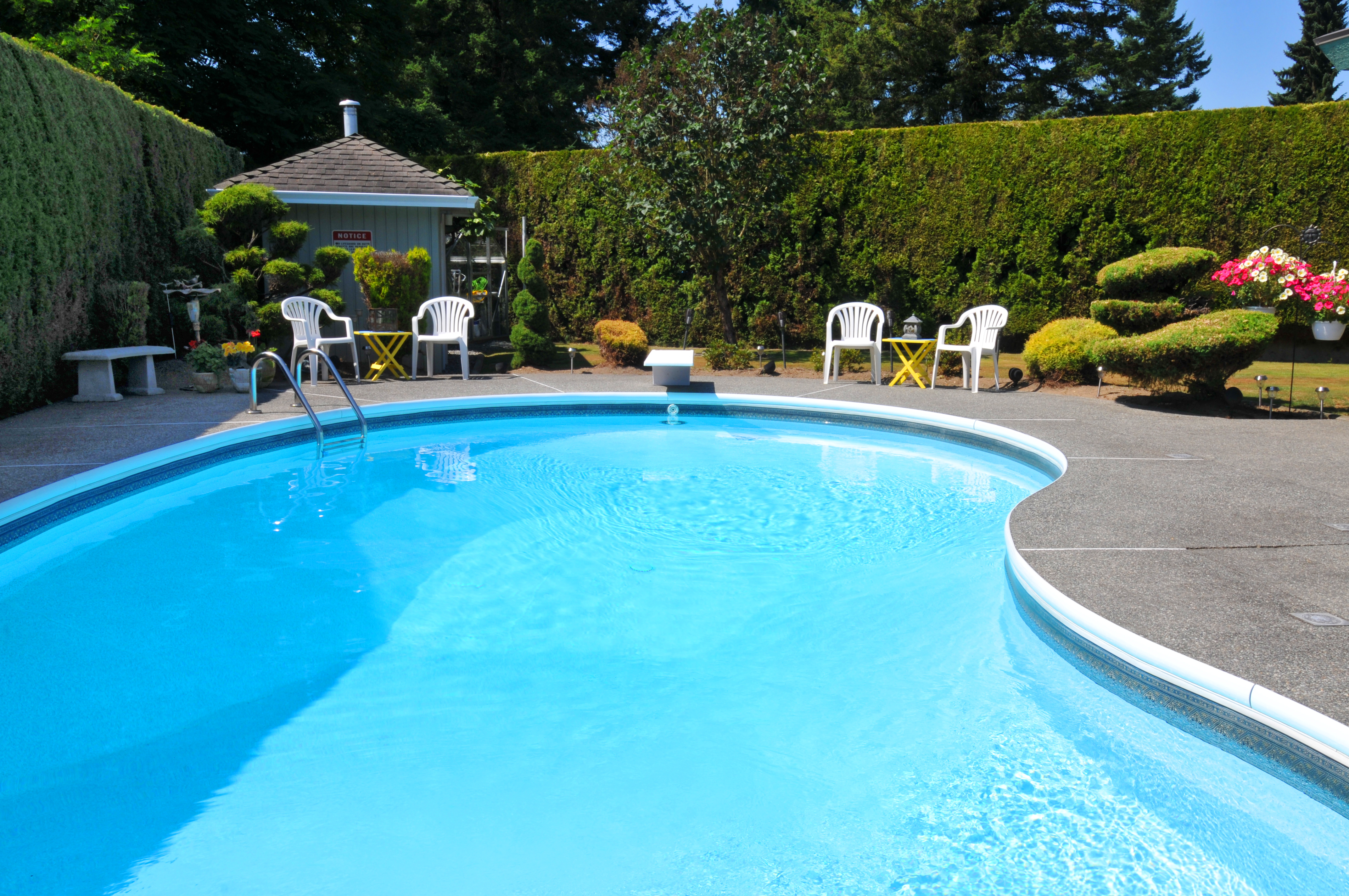
If you’ve been considering installing a new pool in the Buckeye State, this guide will help you understand inground pool costs in Columbus.
Pool liner replacement costs an average of $5,135 in Indianapolis, with a range of $3,665 to $6,729. A pro can give you a quote for your pool based on size, liner type, and more.


Pool liner replacement costs in Indianapolis are twice the national average, so budget for it accordingly.
Schedule your pool liner replacement between May and September for ideal weather conditions.
Proper upkeep of your Indianapolis pool with regular liner upgrades is essential to maintaining your home value.
Hiring a pro to replace your pool liner is the best course of action since it’s a time-consuming and labor-intensive task.
Although Indianapolis residents enjoy a cost of living that’s below the national average, pool maintenance can command a premium. In the case of pool liner replacement costs in Indianapolis, the average cost is $5,135 with a range between $3,655 and $6,729. These figures are double the national average, so it’s advisable to plan ahead for your liner projects.
Here are the details that affect pool liner costs in your area, including pool size, materials, and liner thickness.
Pool liner replacement costs are heavily dependent on the size of your pool and the liner type you need.
The larger your pool, the more costly your liner replacement will be because it requires more labor, materials, and time. Here is a breakdown of national average costs based on pool size.
| Pool Size (Feet) | Average Pool Liner Replacement Cost |
|---|---|
| 6x8 | $240 |
| 8x12 | $480 |
| 8x20 | $800 |
| 10x8 | $400 |
| 12x20 | $1,200 |
| 16x32 | $2,560 |
| 18x36 | $3,240 |
| 20x40 | $4,000 |
Your liner material will drastically affect your costs. Most replacements are for vinyl pools since vinyl pool liners last about 10 years. Due to the cold winter months in Indianapolis, with lows below freezing in December through March, fiberglass and concrete pools with tile are ideal options. These materials withstand the thaw-and-freeze cycle better than vinyl. However, with proper installation and ground prep, a vinyl pool can work in cold weather.
| Liner Material | Average Cost | Pros | Cons |
|---|---|---|---|
| Vinyl | $300–$4,000 | Endless customization options, smooth and soft | Requires more frequent replacements, damaged by imbalanced water |
| Fiberglass | $1,000–$8,000 | Low-maintenance, durable | Limited designs, difficult to repair |
| Tile | $2,000–$70,000 | Visually appealing, low-maintenance | Costly to install, requires nonslip tiles or coatings |

Costs will also depend on the type of pool liner you need. For aboveground pools, the common options are overlap and uni-bead liners. The overlap liner is the most cost-effective and has to be draped and clamped on the edges. The uni-bead liner has a J-hook that attaches to the pool wall, or the hook portion can be trimmed for use as a beaded liner.
In-ground pools most commonly have beaded liners attached to a preinstalled track on the pool wall. This system simplifies the installation and removal process, which is a plus since you’ll need to get a new liner about every 10 years.
| Liner Type | Average Cost |
|---|---|
| Overlap liner | $200–$600 |
| Uni-bead liner | $400–$900 |
| Beaded liner | $500–$1,000 |
For $300 to $500 more, you can opt for a thicker vinyl pool liner. Thicker vinyl is less likely to tear and crack due to severe weather. However, it’s more challenging to install and more likely to wrinkle over time. Your pool pro can give you solid advice on whether to go with the standard 20-mil liner or if you’re better off with one that’s 27 mil or thicker

Now that you understand the basics of pool liner installation costs, consider these additional factors.
Labor costs to install a liner in an aboveground pool range between $250 and $800. On the other hand, labor for an in-ground pool costs $1,000 to $2,500. Aboveground pools cost less because the process is simpler and takes less time. The final pricing depends on the complexity of the project. For example, if you have a custom pool with an unusual shape or deep end, the labor cost will be higher.
However, you can expect costs in Indianapolis to run higher. Since pools aren’t as common in Indianapolis as in warmer cities, there are fewer pool companies, which means higher pricing.
A DIY is possible if you’re working on a small, aboveground pool. However, depending on the type of liner, there are many vital steps requiring manpower and precise measurements. Rather than tackling this on your own, your best bet is to hire a pool liner installer in Indianapolis, Indiana. They’ll take care of all the details, including getting rid of the old liner, giving you time to focus on other projects around the house.
The best time for pool liner installation is during dry weather between 70 and 85 degrees Fahrenheit. When the weather is too warm, the vinyl can warp during the installation. For Indianapolis homeowners, this means the ideal window is between May and September.
To get the best rates, contact pool companies as soon as possible. Don’t wait until summer to get on the schedule, since companies have a lot on their plate during that time. If you realize you need a new liner during the height of summer, expect a waiting period before a pro can come out to do the job.
There are no required permits for installing pool liners in Indianapolis, but check your local regulations to be sure. In the event that your liner installer notices damage to your pool, you’ll need to schedule repairs. Depending on the type of repairs, you may need a building permit, a Class 2 Residential Structural Permit, or drainage, electrical, and plumbing permits. It’s also worth noting that Indianapolis requires pool and tub areas to have a safety cover or a fence with a self-latching gate.
Remember to account for the 7% sales tax in Indianapolis when planning your liner replacement.
In-ground pools can add value to homes in Indianapolis, but it depends on the pool’s condition, meaning that regular pool maintenance and liner replacement make a difference. Skipping a liner replacement could lead to leaks and damage to your pool’s structure, potentially making your home less appealing to buyers.
Moreover, the signs of an outdated liner are easily spotted by simply taking a closer look. Cracks, stains, and fading will be obvious to a discerning buyer.
Home is the most important place on earth, which is why Angi has helped more than 150 million homeowners transform their houses into homes they adore. To help homeowners with their next project, Angi provides readers with the most accurate cost data and upholds strict editorial standards. We survey real Angi customers about their project costs to develop the pricing data you see, so you can make the best decisions for you and your home. We pair this data with research from reputable sources, including the U.S. Bureau of Labor Statistics, academic journals, market studies, and interviews with industry experts—all to ensure our prices reflect real-world projects.
Want to help us improve our cost data? Send us a recent project quote to [email protected]. Quotes and personal information will not be shared publicly.
From average costs to expert advice, get all the answers you need to get your job done.

If you’ve been considering installing a new pool in the Buckeye State, this guide will help you understand inground pool costs in Columbus.

Need to know what pool resurfacing costs? Use this handy guide to get an accurate estimate for your project and see what factors can affect your total.

Find out the average cost to install a pool filter, including installation, maintenance, and replacement, plus tips on choosing the right filter for your pool.

Discover the cost to install a solar pool heater, including average prices, key cost factors, and tips to save on your project.

If you own a pool, you may wonder: how many gallons in my pool? Read on for our pool volume calculator to learn how much water is in your swimming pool.

Ready to say goodbye to your swimming pool and hello to lush, green grass? Learn how to fill a swimming pool with dirt to ensure proper drainage for an even yard.